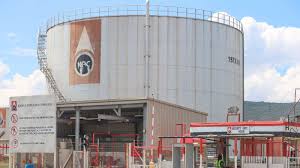Kenya is gearing up to tap its biggest publicly listed companies, Safaricom and the government‑owned Kenya Pipeline Company (KPC), to fund its Sh4.24 trillion budget for the 2025/26 financial year, Finance Minister John Mbadi has revealed. With revenue shortfalls looming and borrowing limits approaching, officials are counting on these two firms to shore up the national coffers and bridge the funding gap.
The government has forecast a total budget of Sh4.24 trillion (about US$32 billion) for the year beginning July 1. To raise the Sh876 billion deficit, it plans a mix of domestic and foreign borrowing, including tapping state‑linked firms with strong cash flows. Safaricom and KPC, as high‑revenue and high‑value public companies, are expected to play a key role in this effort.
Safaricom, Kenya’s telecom giant, is 35 per cent publicly owned and boasts revenues in the hundreds of billions of shillings annually. Analysts say that its healthy profits and dividend streams make it a dependable source of public revenue. Meanwhile, KPC, wholly owned by the Kenyan government and controlling the country’s oil pipeline infrastructure, offers another reliable income stream through fees and operational profits. The National Treasury hopes partial dividends or project‑based levies from these firms will help plug the shortfall.
This is part of a broader strategy to diversify revenue sources without raising taxes. Last year’s unpopular tax increases sparked protests across Kenya’s major urban centres, including Nairobi, Mombasa, and Kisumu. The new fiscal plan aims to avoid fresh taxes by squeezing more from existing government assets and commercial operations.
Beyond dividends, Treasury officials are also exploring “special purpose vehicles” and loans against future earnings from Safaricom and KPC. In effect, the government would borrow now and service part of the debt using future profits from these firms. This model is not new in Kenya, but critics argue it could strain the firms’ balance sheets and eventually slow down investment and growth.
Minister Mbadi emphasised that the strategy is a pragmatic move in the face of limited fiscal space. With Kenya’s public debt hitting approximately 66 per cent of GDP – above the 55 per cent threshold advised by global financial institutions – officials say they face “hard choices.” They need to cover debt‑service costs, boost education, health, infrastructure, and security, and stimulate economic growth under the Bottom‑Up Economic Transformation Agenda (BETA) and Vision 2030 framework.
Still, the reliance on Safaricom and KPC has sparked debate. Some economists warn that divesting dividends or pledging future revenue streams could reduce the firms’ capacity to invest in network expansion or maintain the pipeline system. Safaricom, for example, has aggressive plans for 5G rollout, rural connectivity, and emerging fintech investments. Diverting its profits could slow down these projects.
Likewise, KPC faces pressure to enhance pipeline safety, reduce spills, and maintain efficiency in the face of global energy volatility. Critics argue that draining its coffers now may leave critical infrastructure maintenance underfunded, increasing the risk of costly pipeline failures.
Despite this, the government says it will protect infrastructure funding and regulatory compliance. It plans to negotiate terms that preserve sufficient reinvestment capital while directing only surplus profits toward national priorities. This approach aims to balance development needs with corporate responsibility.
The strategy also aims to limit the need for supplementary budgets mid‑year. Kenyan governments have routinely introduced additional funding bills when revenues fall short. By securing alternate internal revenue streams from Safaricom and KPC, officials hope to reduce reliance on ad hoc funding and maintain fiscal discipline.
Safaricom’s strong financial performance – underpinned by mobile data revenues, M‑Pesa transactions, and growing enterprise services – gives confidence that predictable cash flows can safely be harnessed. Meanwhile, KPC’s stable fee‑based business model and government ownership make it a captive but secure source of funding.
Finance experts caution that this is not a silver bullet. Kenya needs broader structural reforms to deepen domestic revenue, improve tax compliance, and manage public debt effectively. Still, tapping non‑tax revenues from state‑linked corporations offers a politically less painful alternative to new levies.
Public reaction has been cautiously optimistic. Some analysts note that using corporate profits to support national development can be effective – if done transparently and if corporate governance norms are respected. Civil society groups, however, are keeping a close watch on how much is diverted from long‑term investment to cover short‑term budget gaps.
As Parliament prepares to debate and approve the budget, Safaricom and KPC are set to remain centre stage. Their performance and answers on dividend allocations may shape not only this fiscal year’s finances but also future expectations for corporate‑funded public spending.
